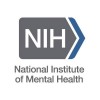
Effects of Aerobic Exercise Intensity on Clinical & Neural Outcomes in Depressed Youth
DepressionThis study will assess the effects of moderate vs. high intensity aerobic exercise, performed 3 times a week for 12 weeks under supervised conditions, on symptoms of depression, cognitive functioning and brain function in transitional aged youth (TAY: aged 16-24 years).

Tianeptine for Treatment Resistant Depression
Treatment Resistant DepressionThe studies will be conducted in parallel at two sites: the the Mood and Anxiety Disorders Program at the Icahn School of Medicine at Mount Sinai (MSSM), and Stanford Depression Research Clinic at Stanford University School of Medicine (SUSM). In addition, MRI studies for the MSSM patients will be carried out at the New York State Psychaitric Institute (NYSPI). The following procedures will be approved by the local Institutional Review Boards (IRBs) at each site, where the site PIs (Alla Landa, PhD, NYSPI, James Murrough, MD at MSSM, and Alan Schatzberg, MD at SUSM) will be responsible for overseeing conduct of the study at their respective site. Dr. Jonathan Javitch is the scientific leader of this program and holds the IND for tianeptine use in this study. Investigators will recruit 75 participants with current unipolar MDD, non-delusional, between 21-60, who have failed at least 2 two adequate treatment trials with a standard antidepressant. Patients will receive an 8-week treatment trial of tianeptine. MSSM patients will also undergo structural and task-based magnetic resonance imaging (MRI) that will be performed under Dr. Landa's direction at NYSPI in order to maintain the internal validity of the data set. MSSM subjects will be transported to NYSPI to complete neuroimaging procedures as described below. Participants will be screened for MRI clearance during their screening visit and again at NYSPI on the day of the scan. Subjects will be asked MRI screening questions to ensure that are scanning eligible. Participants will also have additional tubes of blood drawn for human whole-genomic testing. This microarray will be used to identify regions of the human genome that contribute to disease susceptibility and phenotypes. The Illumina human whole-genome array will be used to provide a comprehensive view of the genome, detects single nucleotide polymorphisms and other variations across the genome.

Treatment of Depression Post-SCI
DepressionSpinal Cord InjuriesDepression is more common after a spinal cord injury (SCI) than in the general population. Unfortunately, it is unknown how depression is typically treated in individuals with SCI or if commonly used treatment methods are effective. This study will investigate the safety and impact of a novel method for treating depression called repetitive transcranial magnetic stimulation (rTMS). rTMS is a type of non-invasive brain stimulation. Fourteen individuals with a cervical or thoracic level SCI and depression will complete an approved treatment plan using rTMS. Participants will be treated using rTMS five days a week for four weeks. After four weeks of treatment, the study team will review the safety of rTMS and assess changes in depressive symptoms. If the results are positive, larger studies can be designed to develop better treatment options for individuals with SCI and depression.

Stepped Care aiTBS 2 Depression Study (Ghent)
Depressive DisorderMajor2 moreAntidepressant-free unipolar melancholic depressed patients (at least stage 2 treatment-resistant) will be selected by a certified psychiatrist, who will administer (semi-)structured clinical interviews. Because concomitant antidepressant treatment can confound outcome results, all patients will go through a medication washout before entering the study and they will be free from any antidepressant, neuroleptic and mood stabilizer for at least two weeks before entering the treatment protocol. Only habitual benzodiazepine agents will be allowed. STEP 1: Patients will be treated with in total 20 accelerated intermittent Theta Burst Stimulation (aiTBS) sessions (3000 pulses/session) over the left dorsolateral prefrontal cortex, which will be spread over 4 days. On each stimulation day, a given patient will receive 5 sessions with a between-session delay of 15 minutes. Patients will be randomized to receive either the real aiTBS or sham treatment (first week). However, the sham group will receive real aiTBS treatment with 10 days' time interval. The investigators expect that real aiTBS treatment and not sham will result in a significant and clinical meaningful response. STEP 2: To optimize treatment and reduce relapse following the iTBS treatment, in a stepped care approach, all patients then continue with cognitive control training (CCT) ten days later. This CCT consists of 20 sessions, spread over 4 weeks. Patients will be randomized to receive either real CCT or a control training. During this follow-up treatment, all patients will be prescribed antidepressant medication (SSRI) again. As iTBS treatment effects are known to decline over time, the investigators expect that combining aiTBS with a follow-up CCT therapy will stabilize the clinical effects over time compared to receiving the iTBS treatment alone. For baseline comparisons, patients will be closely matched for gender and age with never-depressed, medication-free healthy volunteers. No volunteer will undergo treatment.

Concurrent fMRI-guided rTMS and Cognitive Therapy for the Treatment of Major Depressive Episodes...
Major Depressive DisorderBackground: Repetitive transcranial magnetic stimulation (rTMS) is a treatment for depression. It stimulates the brain. Researchers want to see if using magnetic resonance imaging (MRI) scans helps locate the best area for rTMS in each person. They also want to find other ways to make it more effective. Objective: To study the effects of combining MRI- guided transcranial magnetic stimulation (TMS) and talk therapy on the brain in people with depression. Eligibility: Adults ages 18-75 with a major depressive disorder and current depression. If taking an antidepressant, should have been doing so for at least 4 weeks. Design: Participants will be screened with medical and psychiatric history, psychiatric evaluation, physical exam, and blood and urine tests. Phase 1 is 1-4 visits in 1 week. Participants will have: Brain MRI. Participants will lie on a table in a scanner. Questions about their medical history and psychology symptoms Tests of mood and thinking Tests of brain activity. Participants may do tasks during these tests: A cone with magnetic detectors is put on the head. A cap with electrodes is put on the scalp. TMS. A brief electrical current passes through a wire coil on the scalp. A metal disk will be placed on the arm. A nerve will be stimulated with a small electrical shock. Phase 2 is about 6 to 7 weeks. There will be 30 daily sessions of combined therapy and repetitive TMS (rTMS) for 6 weeks. Participants will receive rTMS and another therapy by computer. For rTMS, repeated pulses will pass through the coil. This is followed by up to 3 additional visits, when: Participants will repeat Phase 1 tests Participants will rate their depression symptoms. Phase 3 is 3 visits over 3 months. Participants will rate their depression symptoms and repeat some of the previous questionnaires and tests of mood and thinking.

Clinical Efficacy and Immune Effects of Acupuncture in Patients With Comorbid Chronic Pain and Major...
Chronic PainDepressionBackground: Depression and pain are highly comorbid and share biological mechanisms. Acupuncture is commonly used to manage both pain and depression, but the choice of acupoints for specific disorders differs. This study aimed to investigate whether specific acupuncture intervention on pain- and depression-acupoints would have specific efficacy and immune effects in patients with comorbid chronic pain and major depressive disorder (MDD). Methods: We performed a subject- and assessor-blinded, crossover, and randomized controlled clinical trial of depression- and pain-specific acupuncture intervention and measured clinical responses and proinflammatory cytokines in patients with comorbid chronic pain and MDD. Specific acupoints for pain and depression were used in random order with a washout interval. Outcome measures During the visits at weeks 0 (baseline), 2, 4, 6 (after the first 6-week intervention), 8 (before the start of the second 6-week intervention), 10, 12, and 14 (after the second 6-week intervention), trained research nurses assessed the patients for depressive symptoms, pain symptoms, and the quality of life by using the HAM-D (Hamilton, 1960), BDI-II (Beck et al., 1996), BPI, Neurotoxicity Rating Scale (NRS), Clinical Global Impression scale (CGI), and World Health Organization Quality of Life BREF (WHOQOL-BREF). The HAM-D and BDI-II are the most frequently used observer-rated and self-report scales of depression, respectively. The BPI rapidly assesses the severity of pain and its impact on functioning. The NRS is a reliable and valid self-report measure used in the evaluation of psychiatric and physical symptoms. The CGI are measures of symptom severity, treatment response and the efficacy of treatments. The WHOQOL-BREF contains four domains related to the quality of life: physical health, psychological, social relationships and environment. Blood sample and quantification of cytokines At weeks 0 (baseline), 6 (after the first 6-week intervention), 8 (before the start of the second 6-week intervention), and 14 (after the second 6-week intervention), peripheral venous blood samples (20 mL per time) were collected from the patients.

Depression and Pain Perseverance Through Empowered Recovery Intervention
PainDepressive Symptoms2 moreAfrican American women who are 50 years of age and older with depressive symptoms, pain and difficulty with mobility will participate in the DAPPER intervention study that includes 8 nurse visits in participants' homes to help participants with participants' pain and mood.

Biomarker-guided rTMS for Treatment Resistant Depression
Treatment Resistant DepressionMajor Depressive DisorderRepetitive transcranial magnetic stimulation (rTMS) is a treatment for depression. The investigators are continuing to learn how to optimize outcomes from rTMS treatment. The purpose of this research project is to use brain network connectivity patterns as measured by resting state functional magnetic resonance imaging (fMRI) to confirm a way to optimize the use of rTMS to treat depression. In addition, the study aims to gain a better understanding of how rTMS influences brain networks.

Optimal Electrical Stimulus During Electroconvulsive Therapy
Depressive DisorderMajor2 moreSynopsis Aim: The purpose of the study is to determine the stimulus of electrical current during electroconvulsive therapy (ECT) that produces the optimal balance between antidepressant effect and memory disturbance. Specifically, this study aims to compare the 0.5 ms and 1.0 ms pulse width stimuli. Design: National, register-based randomized trial, unmasked with two treatment arms. Primary objective: To test the hypothesis that a 1.0 ms pulse width stimulus produces a higher remission rate (< 11 on the MADRS-S) than a 0.5ms pulse width stimulus. Secondary objectives include testing for differences in: self-rated global health measured with the EQ5D-VAS subjective memory worsening (increase of 2 on the memory item of the CPRS) antidepressive response (decrease of 50% on the MADRS-S) number of ECTs in the treatment series readmission and suicide rate within 6 months Study population: patients with unipolar or bipolar depression. Sample size: 800 patients, 400 patients in each arm. Inclusion criteria: At least 18 years of age at the time of inclusion Diagnostic criteria fulfilled for unipolar, or bipolar depressive episode according to ICD-10. An indication for and accepting ECT A Swedish personal identity number. Capable of giving informed consent. Exclusion criteria: If the investigator judges a certain pulse width to be inappropriate for the patient. Inclusion time 2019-05-01-2022-11-15. Abbreviations CGI: Clinical Global Impression Scale CPRS: The Comprehensive Psychopathological Rating Scale ECT: Electroconvulsive therapy EQ5D: EuroQual-group 5 Dimensions Scale ICD-10: International Statistical Classification of Diseases and Related Health Problems. - 10th revision, MADRS-S: Montgomery-Åsberg Depression Rating Scale, self assessed version. Q-ECT: Swedish national quality register for ECT VAS: Visual analogue scale

Deep Brain Stimulation (DBS) for Depression Using Directional Current Steering and Individualized...
Major Depressive DisorderThe goal of the study is to address the unmet need of TRD patients by identifying brain networks critical for treating depression and to use next generation precision DBS with steering capability to engage these targeted networks. The study's goal will be achieved through 3 specific aims: Demonstrate device capability to selectively and predictably engage distinct brain networks Delineate depression-relevant networks and demonstrate behavioral changes with network-targeted stimulation Demonstrate that chronic DBS using steered, individualized targeting is feasible and safe for reducing depressive symptoms
